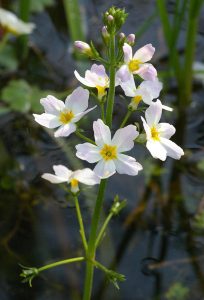
Birdlife
The birdlife is probably the most widely renowned feature of the Avalon Marshes and the area hosts a huge number and broad range of notable species. Owls and birds of prey, ducks, herons, swans, waders and warblers make the area their home including many migratory species. All are attracted by the open landscape, rich biodiversity and related feeding opportunities along with the lack of disturbance or pollution.
Avalon Marshes’ headline bird species
Mammals
The rich and diverse Avalon Marshes’ landscape contains a variety of distinct and important habitats including, reed bed, wet woodland, wet grasslands, ditches, open water and riverside environments. These in turn supply an abundance of food sources and breeding areas for the many species of mammal that thrive here.
Avalon Marshes’ headline mammal species
Fish
The rivers in the Avalon Marshes are home to a thriving fish population including pike, chub, roach, bream and dace. The area is famous however for providing conditions suitable for and attractive to the European eel (Anguilla anguilla).
Amphibians and reptiles
The area contains significant populations of a number of native amphibians and reptiles with habitats providing a plenitude of food, shelter, hibernation sites and breeding opportunities.
Avalon Marshes’ headline amphibian and reptile species
Invertebrates
The importance of the Avalon Marshes’ invertebrate fauna is recognised internationally. The rich network of ditches provide excellent habitat for many aquatic and semi-aquatic species as well as connectivity between reed-beds, fens and fen meadows for a multitude of terrestrial wetland specialists. Wet woodlands also host a wide range of important and impressive species.
Avalon Marshes’ headline invertebrate species
Flora
In addition to the wonderful creatures found here, the wetland conditions mean spectacular displays of flora including a large number of rarities and impressive displays of spring and summer flowers in many habitats.

Species of conservation interest range from the rather insignificant:
• Veilwort (Pallavicinia lyellii)
• Rootless duckweed (Wolffia arrhiza)
• To the spectacular with at least four species of orchid.
Other nationally restricted species include:
• Marsh cinquefoil (Potentilla palustris)
• Water violet (Hottonia palustris)
• Marsh fern (Thelypteris thelypteroides)
• Royal fern (Osmunda regalis)
• Frogbit (Hydrocharis morsus-ranae)
• Marsh pea (Lathyrus palustris)
• Tubular Water Dropwort (Oenanthe fistulosa)
• Milk parsley (Peucedanum palustre)
• Round-leafed sundew (Drosera rotundifolia)
